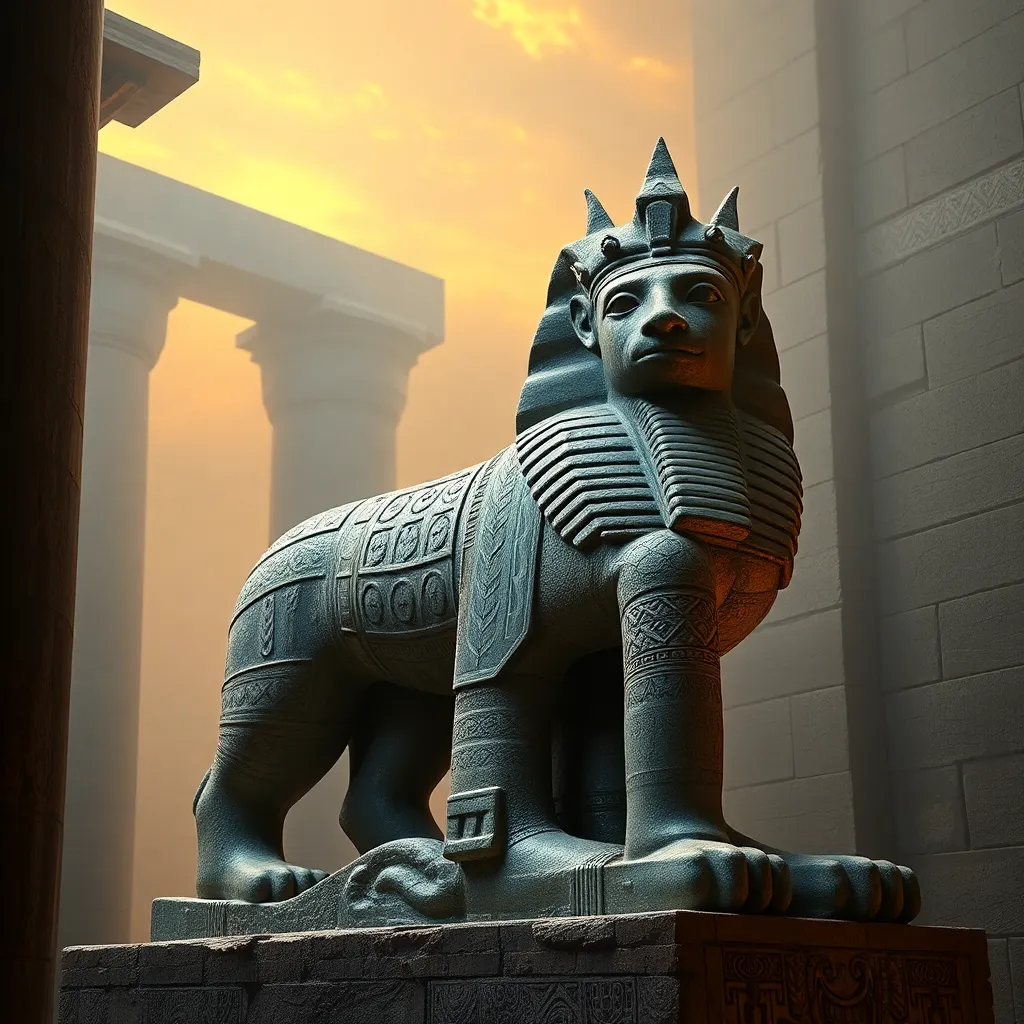The Lamassu in the Ancient City of Babylon: Investigating its Role in Babylonian Religion
I. Introduction
The Lamassu is a fascinating creature from ancient Mesopotamian mythology, depicted as a hybrid being with the body of a bull or lion, the wings of an eagle, and the head of a human. These majestic figures were placed at the entrances of important structures, serving as both guardians and symbols of power.
Babylon, one of the most significant cities in ancient Mesopotamian civilization, was a center of culture, religion, and politics. Its rich history and contributions to human development make it a subject of great interest to historians and archaeologists alike.
This article aims to explore the role of the Lamassu in Babylonian religion, examining its physical attributes, mythological significance, protective functions, and lasting legacy in later cultures.
II. Historical Context of Babylon
Babylon rose to prominence around the 18th century BCE, particularly under the rule of King Hammurabi, who established one of the earliest written legal codes. The city became a political and cultural hub, renowned for its impressive architecture, including the iconic ziggurat.
Babylonian religious practices were deeply intertwined with their understanding of the cosmos and the divine. Key beliefs included:
- A pantheon of gods and goddesses, each governing various aspects of life and nature.
- The importance of rituals and offerings to appease these deities.
- A belief in the afterlife and the spiritual significance of various animals and symbols.
Architecturally, Babylon was characterized by grand structures adorned with intricate artwork, which played a significant role in both the spiritual and civic life of its people.
III. The Lamassu: Physical Characteristics and Symbolism
The Lamassu stands out with its imposing figure, typically portrayed with the body of a bull or lion, wings of an eagle, and a human head, often adorned with a beard and intricate headdresses. These sculptures were typically carved from stone, showcasing exceptional artistry and craftsmanship.
The symbolism of the Lamassu is multifaceted:
- The bull or lion represents strength and power.
- The wings signify protection and the ability to transcend earthly realms.
- The human head embodies intelligence and wisdom.
Artistic styles varied, with early depictions being more rigid and later styles exhibiting greater dynamism and naturalism, reflecting the evolving artistic techniques of the time.
IV. The Lamassu in Babylonian Mythology
In Mesopotamian mythology, the Lamassu is believed to have originated as a protective spirit, embodying the guardianship role in various mythological tales. These beings were often associated with major deities, serving as their emissaries or manifestations.
Lamassu figures were frequently mentioned in mythological narratives, illustrating their importance in the spiritual landscape of Babylon. They were seen as mediators between the divine and human realms, ensuring the safety and prosperity of the city.
V. The Lamassu as a Protective Figure
The primary function of the Lamassu was to act as a guardian of cities and temples. Statues were strategically placed at the entrances to palaces, temples, and city walls, symbolizing protection against both physical and spiritual threats.
In Babylon, the placement of Lamassu statues held great significance. They were often positioned in pairs, creating a formidable presence that invoked a sense of security for the inhabitants. Rituals and offerings were commonly performed in their honor, believing that such acts would ensure continued protection and favor from the gods.
VI. The Role of Lamassu in Religious Practices
The Lamassu was a prominent feature within temples and sacred spaces, often positioned to oversee worshippers as they entered. This placement underscored their role as guardians of the divine.
Worshippers would interact with the Lamassu through rituals, offerings, and prayers, seeking blessings and protection. The imagery of the Lamassu was also prevalent in religious texts and inscriptions, emphasizing its importance in the spiritual practices of the Babylonians.
VII. Legacy of the Lamassu in Later Cultures
The influence of the Lamassu extended beyond Babylon, impacting subsequent civilizations such as the Assyrians and Persians, who adopted similar protective figures in their architectural designs.
In modern times, the Lamassu continues to capture the imagination of artists, historians, and scholars. Its representations can be seen in various forms, from sculptures to popular culture. Archaeological discoveries have further enriched our understanding of the Lamassu, shedding light on its role in ancient societies.
VIII. Conclusion
In conclusion, the Lamassu played a vital role in Babylonian religion as a symbol of protection and power. Its significance in the architectural and spiritual life of ancient Babylon provides profound insights into the culture and beliefs of its people.
The ongoing study of the Lamassu remains relevant, as it enables us to understand the complexities of ancient religions and their lasting impact on human civilization.



